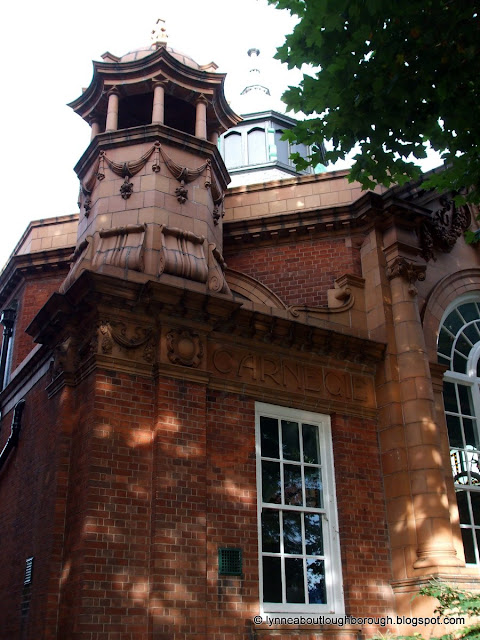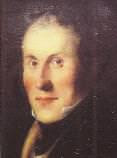Last week on the blog we celebrated 120 years since the opening of the Carnegie Library on Granby Street. In the report of the opening ceremony, there was mention of several people with a connection to the town, and to the library, so I thought this week I would tell you a little about one of those people - John Thomas Judges.
 |
| Posted with kind permission of LCC, granted Sept 2024 |
John Thomas Judges was born in 1848, and baptised at Boughton-under-Blean in Kent, on 14 January 1849. His parents were John, a bricklayer, born at Boughton-under-Blean, near Faversham in Kent, and Mary (née Fox), born at Harbledown, near Canterbury, but only about 5 miles from Boughton-under-Blean. The couple had already had three other children before John Thomas was born – William baptised on 22 August 1841, Catherine (sometimes recorded as Caroline) baptised 5 March 1843, and Rachel Mary born c.1847. At least two further children followed, in 1851 and 1852, but sadly, both died in infancy.
John Thomas attended the District National School and Wreight’s School, both in Faversham, and later became a pupil teacher in the local schools. In 1870 he qualified as a teacher, and became head teacher at the River Board School, in Kearsney, Kent, which when it was first established was in a small wooden building near the railway station. On 20 September 1873, John Thomas married Caroline Eleanor Swoffer of Faversham, at the church of St Peter and St Paul in Boughton-under-Blean, and sometime after their marriage the couple made their home in Quorn, where daughter Kate Swoffer Judges was baptised on 17 August 1876, and Caroline Mary Swoffer was baptised at All Saints church in Loughborough on 22 July 1879, after her father had taken up the head teacher post at the Lancastrian School on Church Gate.
From 1880 onwards, John Thomas was listed in various directories as being the school master at the Burton Endowed School situated at 43 ½ Church Gate. John’s parents were still living in Boughton-under-Blean, which is where his mother died in 1884.
In December 1886, at a meeting to discuss the formation of a cricket club, John was elected to the committee, along with, amongst others, John Paget, Alfred Adolphus Bumpus. In 1891, John, still listed on the census return as a certified teacher, and Caroline, now aged 42 and 40, were living at 43b Church Gate with daughters Kate aged 14, and Caroline aged 12, who were both attending school. However, a trade directory of 1895 lists John as an insurance agent on Church Gate, although he continued to teach at the school until 1909.
On 4 October 1899, John, a retired builder, who was the father of John Thomas, died in Boughton-under-Blean. John Thomas and Caroline were still living on Church Gate in 1901, but Caroline was at the Training College for Mistresses at Cheltenham, and Kate was possibly in St Andrews, training to be a teacher, although by 1904 she was an Assistant Mistress at the Wallingford Grammar School. Sadly, in June 1905, Caroline Judges died, and following a period of failing health, John Thomas also died on 28 September 1909. Probate was granted on 12 January 1910 to spinster daughters, Kate and Caroline who at the time were living at 68 Frederick Street, Loughborough. His effects amounted to £1,985 1s. 5d.
During his lifetime, John Thomas had thrown himself into the life of the town. He had been chair of the trustees of the John Storer Charity; he was a director of the Loughborough Building Society for many years; he was a founding member and secretary for many years of the Loughborough Club; he served on the Town Council until the passing of the Education Act of 1902; he was on the Free Library Committee, and many other town charities.
After his
death, a memorial tablet made of brass was created and unveiled at the Church Gate
School, by Councillor Benjamin Braybrooke Barrow, who was chair of the Education Committee at the time. The tablet was inscribed:
“John Thomas Judges, for 30 years headmaster of this school. Died December 28, 1909. This tablet is erected as a mark of affection by the past and present masters and scholars.” - Melton Mowbray Mercury and Oakham and Uppingham News 12 May 191.
Barrow said of Judges:
“he was eminently accurate in all he did; an enemy to slovenliness in dress, manner of speech, whilst a marked characteristic was his politeness.” - Leicester Evening Mail, 7 May 1910
Mr Leon Morley, superintendent of the Parish Church Sunday School, who had been a pupil at the school, said of Judges:
“[pupils] knew of his wonderfully methodical habits, how he left nothing to chance”.
Kate, his daughter, was unable to attend the unveiling ceremony, but she instigated the John Thomas Judges Memorial Prize for the boy who had shown himself to have been the most public-spirited during each year for five years. Daughter Caroline, who was head teacher at the Warner School, was able to attend, and she presented a framed photograph of her father to the school.
Both daughters followed in the footsteps of their teacher father, although upon her marriage to John Ernest Theophilus Chapman, a 58-year-old widower, at Marylebone Church in 1913, and the birth of their daughter, Barbara on 8 February the following year, Kate gave up her teaching career. Although Kate’s husband died in 1921, it is unlikely that she re-entered the teaching profession.
Caroline, however, did not marry, and in 1921 she was the headmistress of St Clements Church of England elementary school for girls in York. By 1939, Caroline had retired from her head teacher role, and was living at 14b High Street, Brighton, aged 79. By 1939, Kate was now widowed and was living at 21d Nevern Road, Kensington, London, with daughter Barbara, who had married Mostyn Cohen.
Kate Swoffer Chapman (nee Judges) died at Rayland Nursing Home, 54 Marine Parade, Brighton. Probate was granted on 4 March 1952 to Westminster Bank Ltd. and Barbara Joan Cohen (her daughter, and wife of Mostyn Cohen). Her effects were £10,820 4s..
Caroline Mary Swoffer Judges, of Karney House, Westbrooke, Worthing, died at 10 St Michael’s Road, Worthing, at the age of 93. She was buried at Durrington cemetery, West Sussex. Probate was granted on 24 September 1953 to Barbara Joan Cohen (her niece, and wife of Mostyn Cohen), and her effects were £1,170 12s. 8d.. Mostyn Cohen died in 1970, and Barbara in 2001.
This has been a very brief look at the life and times of John Thomas Judges.
____________________________________
Posted by
lynneaboutloughborough
With apologies for
typos which are all mine!
_______________________________________________
Thank you for reading this blog.
Copyright:
The copyright © of all content on this blog rests with me, however, you are welcome to quote passages from any of my posts, with appropriate credit. The correct citation for this looks as follows:
Dyer, Lynne (2025). So Who Was John Thomas Judges? Available from: https://lynneaboutloughborough.blogspot.com/2025/06/so-who-was-john-thomas-judges.html aboutloughborough.blogspot.com/2023/03/loughborough-and-isaac-newton.html] [Accessed 29 June 2025]
Take down
policy:
I post no pictures that are not my own, unless I have express permission so to do. All text is my own, and not copied from any other information sources, printed or electronic, unless identified and credited as such. If you find I have posted something in contravention of these statements, or if there are photographs of you which you would prefer not to be here, please contact me at the address listed on the About Me page, and I will remove these.
External Links:
By including links to external sources I am not endorsing the websites, the authors, nor the information contained therein, and will not check back to update out-of-date links. Using these links to access external information is entirely the responsibility of the reader of the blog.
Blog
archive and tags:
If you are viewing this blog in mobile format, you will not be able to easily access the blog archive, or the clickable links to various topics. These can be accessed if you scroll to the bottom of the page, and click 'View Web Version'. Alternatively, there is also a complete list of posts, which when clicked will take you to the page you are interested in.
Searching
the blog:
You can search the blog using the dedicated search box that appears near the top of the blog when viewed in the web version. Alternatively, you can search using your usual search engine (e.g. Bing, Google, DuckDuckGo etc.) by following this example:
site: https://lynneaboutloughborough.blogspot.com/ “Radmoor House”
NOTE – the words you’re actually looking for must be in “” and the first of these must be preceded by a space
Thank you for reading this blog.
Lynne










